Country guides

Things to do in France
Naturally, most visitors start their holiday in the French capital, Paris, where the Eiffel Tower offers spectacular views over the city. Shopping at Galeries Lafayette or on the Champs Elysees is a unique experience, as is taking in the exhibitions at the Louvre and Musee d'Orsay, or relishing the delights of the Moulin Rouge. Day trips take guests to the Palace of Versailles and Disneyland.
South of Paris lies the Loire Valley, known as the 'Garden of France' for its abundance of vineyards and fruit orchards. The imposing chȃteaux spread across the valley are cultural monuments to the ideals of the Renaissance period. Less well known but equally stunning is Provence. Tourists can stroll through the markets of Aix-en-Provence, visit the Pope's Palace in Avignon, buy fresh seafood in Marseille, and visit the rural wetlands of the Camargue, home to the fabled white horses.
There are ancient gems in every direction. The coast of Normandy hosts the magical island of Mont-Saint-Michel, topped by a medieval monastery. To the south lies the historic fortified city of Carcassonne.
The Alps are a playground for skiing in the winter, and hiking or cycling in the summer. The Pyrenees offer a view of the wilder side of France. Travellers can take a cable car ride to the summit of Pic du Midi, or experience the famous pilgrimage to Lourdes.
The ultimate jet-set lifestyle awaits on the Cote d'Azur, where visitors are treated to 71 miles (115km) of Mediterranean coastline and beaches, more than 60 golf courses, 47 ski resorts, thousands of restaurants and an abundance of sunny weather. Travellers who visit in May can catch a glimpse of Hollywood's finest at the Cannes Film Festival.
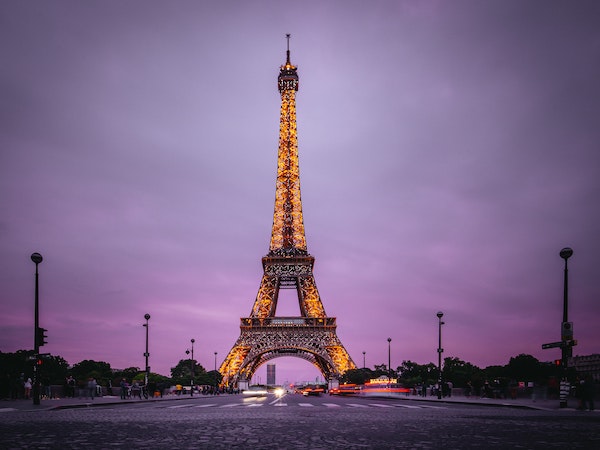
Eiffel Tower
Gustave Eiffel, the architect of the Eiffel Tower (Tour Eiffel) could never have guessed that it would become Paris' signature sightseeing attraction and attract more than six mill…
Eiffel Tower
Gustave Eiffel, the architect of the Eiffel Tower (Tour Eiffel) could never have guessed that it would become Paris' signature sightseeing attraction and attract more than six million visitors a year. It was built as a temporary structure to commemorate the centenary of the French Revolution and was opened by the Prince of Wales, later King Edward VII of England. The Eiffel Tower was considered an eyesore by many and there were petitions to have it pulled down. It was saved only because it had become an important antenna for telegraphy. It towers 984 feet (300m) above the Champ de Mars and until 1930 was the world's tallest building. The highest of its three levels offers a wonderful panoramic view over Paris.
The Eiffel Tower itself has several restaurants, including the popular Le Jules Verne, with panoramic views of the city, and a champagne bar at the very top. There are also several souvenir shops and a carousel at the base. This is a great way to keep children entertained if you plan to go to the top of the Tower, as the queues can be several hours long. A slightly different (and cheaper) way to enjoy the Eiffel Tower is with a picnic on the lawns with the famous structure providing a picturesque backdrop.
Website www.tour-eiffel.fr
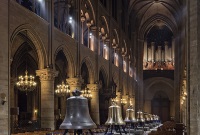
Notre-Dame
Notre-Dame looms large over the Place de Paris, on the Isle de la Cité, and as the most enduring symbol of Paris is an alluring tourist attraction. Built between 1163 and 1345 the…
Notre-Dame
Notre-Dame looms large over the Place de Paris, on the Isle de la Cité, and as the most enduring symbol of Paris is an alluring tourist attraction. Built between 1163 and 1345 the cathedral is considered one of the world's Gothic masterpieces. The massive interior can seat 6,000 people and it is dominated by three spectacular and enormous rose windows and a vast 7,800-pipe organ. The 387-step climb to the top of the towers is worth the effort for the panoramic view of the city and the close-up views of the famous gargoyles. The tower also holds the great bell that was rung by Quasimodo, the fictional hunchback in the novel by Victor Hugo.
Opposite the north door is a museum that displays the cathedral's history, while under the square in front of the cathedral is the crypt that houses Notre-Dame's archaeological museum. The church has no real gift shop, but votive candles are available at points in the cathedral in return for a donation.
For a special experience, visit Notre-Dame on a Sunday morning when many of Paris's museums are closed and services are being held, but be respectful of worshippers, especially when taking photos. Another really special time to visit Notre Dame is on summer evenings for the Night Show, an operatic performance projected on a 100-metre tulle screen hanging in the nave. The performances are held nightly in July and August.
Website www.cathedraledeparis.com
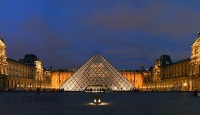
Louvre
One of the world's great art museums, this vast edifice houses an extraordinary collection of paintings, sculptures and antiquities from all over the world. The permanent collectio…
Louvre
One of the world's great art museums, this vast edifice houses an extraordinary collection of paintings, sculptures and antiquities from all over the world. The permanent collections are divided into Egyptian, Greek, Roman and Asian antiquities, painting, drawings, sculptures and objects d'art.
The Louvre was opened to the public in 1793, soon after the Revolution, to display the spectacular treasures looted from the royal palaces. The best-known attractions in the Louvre are Leonardo da Vinci's enigmatic Mona Lisa, which is protected by bullet-proof glass within its own room; and the ancient Venus de Milo. While the Venus de Milo is one of the highlights of a visit to the Louvre, the Mona Lisa can be a disappointment because people usually imagine it is much bigger than it is, and it is usually surrounded by a crowd. With more than 35,000 works on display, don't even attempt to see it all in one day. The building itself is a work of art and the ceilings, floors and staircases will enthral visitors.
Website www.louvre.fr
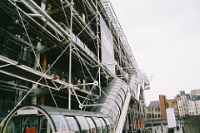
Pompidou Centre
Built in the 1970s and named after former French president Georges Pompidou, the futuristic Pompidou Centre is now considered part of the Parisian landscape. The outrageous design,…
Pompidou Centre
Built in the 1970s and named after former French president Georges Pompidou, the futuristic Pompidou Centre is now considered part of the Parisian landscape. The outrageous design, complete with its glass elevators, was the inspiration for the Lloyds Building in London and attracts visitors by the million; it is the city's most popular attraction by far. The building houses the Musée National d'Art Modern (MNAM), which displays a vast collection of 20th-century art, from Fauvism and Cubism to Abstract and Absurd, and its numerous cinemas and theatres have regular musical and dance performances. The square to the west of the building attracts a varied assortment of street performers. While there, visitors should be sure to check out the whimsical Stravinsky Fountain with its 16 water-spraying sculptures.
Website www.centrepompidou.fr
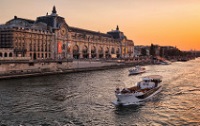
Musée d'Orsay
This great museum is fairly new by Paris standards. It is situated in a railway station by the Seine and houses a vast collection of works from the significant 1848 to 1914 period.…
Musée d'Orsay
This great museum is fairly new by Paris standards. It is situated in a railway station by the Seine and houses a vast collection of works from the significant 1848 to 1914 period. There are important works from the Art-Nouveau movement but the Orsay is best known for its Impressionist and Post-Impressionist art. The collection is arranged chronologically and contains highly regarded works by Monet, Manet and Courbet. Also on permanent display is the famous painting by Gustave Doré entitled L'enigme, and Henri Chapu's marble statue of Joan of Arc in Domremy. The Musee d'Orsay is one of the most famous art museums in the world and one of France's premier attractions. Even the uninitiated will appreciate this world-class museum, and art fanatics will be in heaven. There is a restaurant and a book shop at the museum.
Website www.musee-orsay.fr
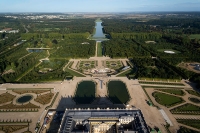
Versailles
The Château de Versailles stands 15 miles (24km) southwest of Paris and is one of France's most noted attractions. Most of the palace was built between 1664 and 1715 by Louis XIV …
Versailles
The Château de Versailles stands 15 miles (24km) southwest of Paris and is one of France's most noted attractions. Most of the palace was built between 1664 and 1715 by Louis XIV (known as the Sun King), who turned his father's hunting lodge into the grandest palace ever built. The 'Old Château' still exists but is enveloped by the vast white stone façade of the New Château. This lavish statement of monarchical power was to become a symbol of the excess that would lead to the revolution of 1789.
Perhaps the most famous room in the palace is the Hall of Mirrors (Galerie des Glaces) where the Treaty of Versailles was signed, signifying the end of the Great War. Within the palace visitors can also see the former royal bedchambers, the grand staircase and other staterooms, and within the vast landscaped park and gardens are many wonderfully ornate fountains and ponds. There is a small train that ferries visitors from the palace to the Grand Trianon and Petit Trianon, former love nests where both the Sun King and Napoleon enjoyed the company of their mistresses.
Website www.chateauversailles.fr
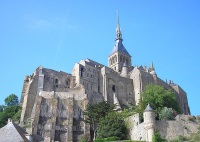
Mont Saint-Michel Abbey
One of France's best-known attractions, the Mont Saint-Michel Abbey, is situated on a rocky island just off the coast of Normandy and Brittany. It was founded in 708 by the Bishop …
Mont Saint-Michel Abbey
One of France's best-known attractions, the Mont Saint-Michel Abbey, is situated on a rocky island just off the coast of Normandy and Brittany. It was founded in 708 by the Bishop of Avranches, who built a chapel here. Construction of the current abbey began in 1023 but was not finished for 400 years. Built with granite, it encompasses a range of architectural styles, from Norman to Gothic. The abbey has been a site for pilgrimages for centuries and has also served as a monastery, a prison and a fortress protecting against the English during its long history.
There is still a Benedictine monastery within the abbey, which can be visited on a guided tour. Among the maze of cobbled streets within the walls of the abbey are a number of other attractions; the little medieval village still boasts its 15th and 16th-century houses and there are shops, restaurants and a few good museums including a maritime museum and a multimedia museum that tells the story of the island. There are also some amazing views out into the bay. Visitors could easily spend a whole day exploring this fascinating place.
Website www.abbaye-mont-saint-michel.fr/en/
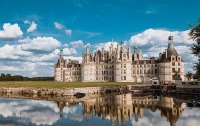
Château de Chambord
Eleven miles (18km) east of Blois, the vast Château de Chambord is the largest château in the Loire Valley. It was commissioned by François I, who wanted to outshine the Holy Ro…
Château de Chambord
Eleven miles (18km) east of Blois, the vast Château de Chambord is the largest château in the Loire Valley. It was commissioned by François I, who wanted to outshine the Holy Roman Emperor Charles V, and the result is a spectacular Renaissance masterpiece with 450 rooms. It was designed by an Italian architect in 1519, but was worked on by French masons.
The outside is essentially French medieval and has massive round towers with conical tops, and an explosion of chimneys, pinnacles and turrets. The details inside, however, are pure Italian: the Great Staircase (attributed by some to da Vinci), panels of coloured marble, niches decorated with shell-like domes, and freestanding columns.
Wandering through, visitors can get a good feel for the contrasting architectural styles, which have combined to create a very decadent, if at times discordant, whole. The château is surrounded by a 20-mile (32km) wall containing a 5,261-hectare (13,000-acre) deer park. It is one of the most impressive castles in the world.
Website www.chambord.org
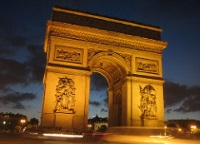
Arc de Triomphe
The world's largest triumphal arch, the Arc de Triomphe de l'Etoile is set at the centre of a star-shaped configuration of 12 radiating avenues in the heart of the Champs Elysées.…
Arc de Triomphe
The world's largest triumphal arch, the Arc de Triomphe de l'Etoile is set at the centre of a star-shaped configuration of 12 radiating avenues in the heart of the Champs Elysées. It stands 165 feet (51m) tall and the names of major victories won during the Revolutionary and Napoleonic periods are engraved around the top of the Arch. The names of less important victories, as well as those of 558 generals, can be found on the inside walls.
Since 1920, the tomb of France's Unknown Soldier has been sheltered underneath the arch. Its eternal flame commemorates the dead of the two world wars, and is rekindled every evening at 6pm. On July 14, the French National Day, also known as Bastille Day, a military parade starts at the arch and proceeds down the Champs Elysées. Visitors can climb to the top of the Arc de Triomphe (or take the elevator) and the views over Paris are spectacular. It is a humbling monument that can't fail to inspire respect and awe, and a trip to Paris is not complete without a visit.
Website arc-de-triomphe.monuments-nationaux.fr
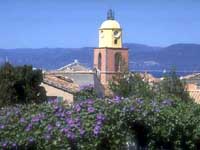
St Tropez
St Tropez has long held the reputation of being the 'black sheep' of the renowned French Riviera holiday resort towns. Sexy starlets were flaunting themselves topless here back in …
St Tropez
St Tropez has long held the reputation of being the 'black sheep' of the renowned French Riviera holiday resort towns. Sexy starlets were flaunting themselves topless here back in the 1930s, long before the beautiful people dared disrobe elsewhere. St Tropez' reputation as a kinky carnival town attracting the more bohemian members of the 'in' crowd continues to this day.
There is little left of the medieval Provencal atmosphere of the original town. From May to September, St Tropez is the wild holiday destination people imagine, but in the off season the town virtually shuts down, reverting to a quieter, calmer existence. Behind the rows of yachts fronting the terraced cafés of the waterfront are some narrow, picturesque streets full of shops. The hub of the town is the Place aux Herbes, a busy enclave of fish, fruit, vegetable and flower stalls.
The beach in St Tropez is famous, and has a number of bars, cafes, and watersports options, especially the popular Plage de Tahiti. The beaches west of St Tropez are popular with nudists. Visitors can stroll the Sentier Littoral, a coastal walking route with fabulous views, or visit the Musée de I'Annonciade, which has an exceptional collection of post-Impressionist paintings.
The area around Quai Jean Jaures on the waterfront is where the best of the nightlife can be found. Within town there are charismatic and laid-back bars in and around Place des Lices. For celebrity spotting and pricey champagne cocktails, visitors should get dressed up and head to Nikki Beach.
Website www.sainttropeztourisme.com/en/
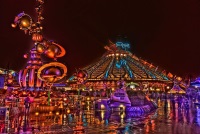
Disneyland Paris
The blueprints for the holiday destination of Disneyland may have been developed in the United States, but the world's favourite theme park concept has transported exceedingly succ…
Disneyland Paris
The blueprints for the holiday destination of Disneyland may have been developed in the United States, but the world's favourite theme park concept has transported exceedingly successfully to Europe. Situated 20 miles (32km) east of Paris, Disneyland Paris (also known as EuroDisney) is a vast complex of hotels, restaurants and shops together with the exciting theme park. Those in the know have it that Europe's Disneyland is actually better than its US counterparts, boasting more modern technology and existing in the ambit of less control and different safety regulations. EuroDisney has also unavoidably picked up a European flavour which adds charm and intimacy to the entire experience.
EuroDisney actually consists of two theme parks. The Disneyland Park, based on California's iconic Magic Kingdom, boasts 53 awesome attractions, drawing thousands of holidaymakers every year. The Walt Disney Studios were built more recently and follows the trend of the Disney MGM Studios in Florida, USA, using movie-like settings for thrill rides and experiences. Adults and children alike become enchanted and enthralled as they explore fantasy neighbourhoods bristling with Disney characters, and stop to take in the spectacle of the day and night parades.
Most visitors come to EuroDisney on a package deal that includes onsite hotel accommodation and passes to enjoy the shows and attractions. At least two days are required to make the most of the Disney magic, and there will still be plenty left for a second visit.
Website www.disneylandparis.com
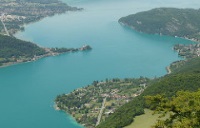
Annecy
Situated 80 miles (129km) east of Lyon, the holiday destination of Annecy has a magical setting on the shore of Lake Annecy, at the foot of the French Alps. It has been called the …
Annecy
Situated 80 miles (129km) east of Lyon, the holiday destination of Annecy has a magical setting on the shore of Lake Annecy, at the foot of the French Alps. It has been called the 'Venice of the Alps' because of the web of canals that cut through the Annecy old town. Annecy is probably the best base for a holiday in the Haute-Savoie region as it's conveniently situated near many interesting towns and attractions.
Just six miles (10km) to its west is Gorges du Fier, a dramatic river gorge; a gangway takes visitors through a narrow gully that has been cut by a torrent of water over the eons. Emerging from this labyrinth, visitors are greeted by a huge expanse of boulders. The site is closed to the public between mid-October and mid-March. Visitors can also take a cruise on the ice-blue lake for which the town is famous.
The area is great for hiking and one of the most popular (though not easy) hikes is on La Tournette mountain, which gives visitors astounding views of the lake and the Alps and boasts some picturesque waterfalls. The trail is well marked and the steepest rock scrambles have rails installed. La Tournette looms over the small town of Montmin, a pretty 30-minute drive from Annecy.
Website en.lac-annecy.com


